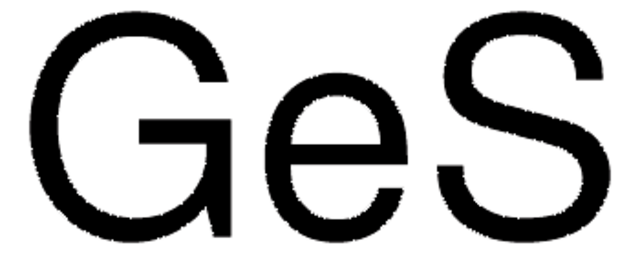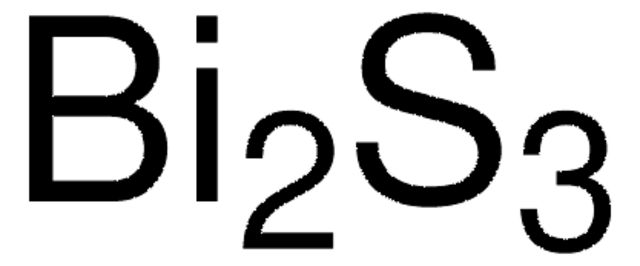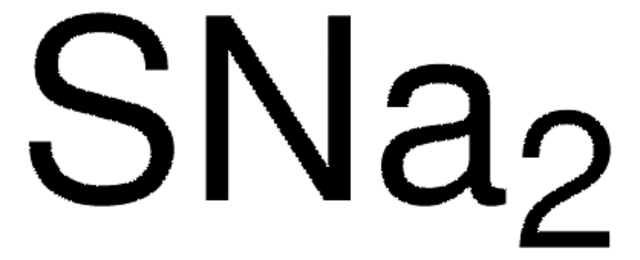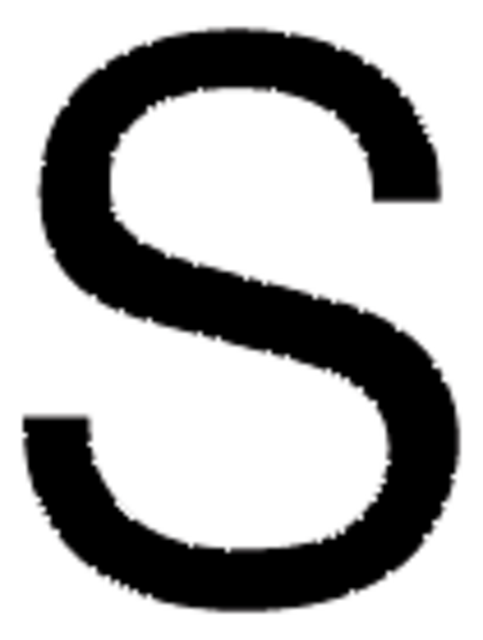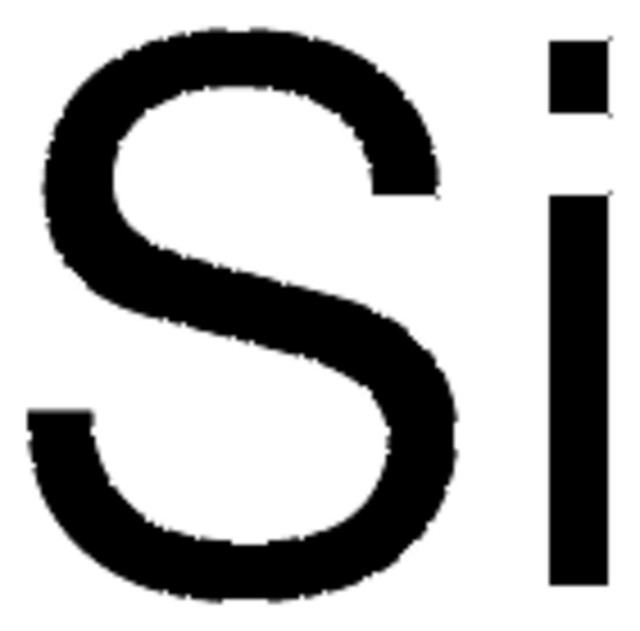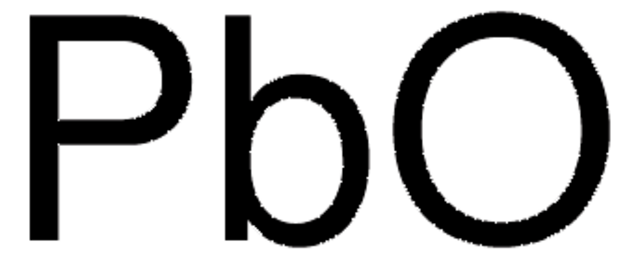229466
Antimony(III) sulfide
99.995% trace metals basis
Autenticatiper visualizzare i prezzi riservati alla tua organizzazione & contrattuali
About This Item
Formula condensata:
Sb2S3
Numero CAS:
Peso molecolare:
339.72
Numero CE:
Numero MDL:
Codice UNSPSC:
12352300
ID PubChem:
NACRES:
NA.23
Prodotti consigliati
Saggio
99.995% trace metals basis
Punto di fusione
550 °C (lit.)
Densità
4.64 g/mL at 25 °C (lit.)
Stringa SMILE
S=[Sb]S[Sb]=S
InChI
1S/3S.2Sb
IHBMMJGTJFPEQY-UHFFFAOYSA-N
Cerchi prodotti simili? Visita Guida al confronto tra prodotti
Categorie correlate
Descrizione generale
Antimony(III) sulfide (Sb2S3) is a semiconductor material known for its unique optical and electronic properties, including a direct bandgap of approximately 1.7 eV, making it suitable for photovoltaic applications. Its high absorption coefficient enables effective light harvesting, which is advantageous in solar cells and photodetectors. Additionally, Sb2S3 exhibits promising thermoelectric properties, making it a candidate for energy conversion applications.
Applicazioni
- Thermal decomposition of tris(O-ethyldithiocarbonato)-antimony(III): A single-source precursor for antimony sulfide thin films, important for developing materials with specific optical properties (Eensalu et al., 2022).
- Antimony sulfide as a light absorber in highly ordered, coaxial nanocylindrical arrays: Discusses the integration of antimony sulfide into photovoltaic devices, significant for chemists interested in renewable energy solutions (Wu et al., 2015).
- Syntheses and characterization of one-dimensional alkali metal antimony (III) thiostannates: Explores novel antimony(III) sulfide compounds for potential use in electronic and photonic devices (Yohannan and Vidyasagar, 2015).
- Antimony (III) speciation in hydrosulfide solutions: Provides insights into the geochemical behavior of antimony sulfide complexes, important for environmental chemists and academia studying heavy metal cycling (Olsen et al., 2019).
Avvertenze
Warning
Indicazioni di pericolo
Consigli di prudenza
Classi di pericolo
Aquatic Chronic 3 - Carc. 2 - STOT RE 2
Organi bersaglio
Lungs
Codice della classe di stoccaggio
6.1C - Combustible acute toxic Cat.3 / toxic compounds or compounds which causing chronic effects
Classe di pericolosità dell'acqua (WGK)
WGK 2
Punto d’infiammabilità (°F)
Not applicable
Punto d’infiammabilità (°C)
Not applicable
Dispositivi di protezione individuale
dust mask type N95 (US), Eyeshields, Gloves
Scegli una delle versioni più recenti:
Possiedi già questo prodotto?
I documenti relativi ai prodotti acquistati recentemente sono disponibili nell’Archivio dei documenti.
I clienti hanno visto anche
Justin Varghese et al.
Nano letters, 12(2), 868-872 (2012-01-25)
We report the first observation of piezoelectricity and ferroelectricity in individual Sb(2)S(3) nanowires embedded in anodic alumina templates. Switching spectroscopy-piezoresponse force microscopy (SS-PFM) measurements demonstrate that individual, c-axis-oriented Sb(2)S(3) nanowires exhibit ferroelectric as well as piezoelectric switching behavior. Sb(2)S(3) nanowires
C Tsopelas
Journal of nuclear medicine : official publication, Society of Nuclear Medicine, 42(3), 460-466 (2001-05-05)
Colloidal particle size is an important characteristic to consider when choosing a radiopharmaceutical for mapping sentinel nodes in lymphoscintigraphy. Photon correlation spectroscopy (PCS) and transmission electron microscopy (TEM) were used to determine the particle size of antimony trisulfide and rhenium
B Kalin
Acta radiologica. Supplementum, 385, 1-24 (1993-01-01)
Today bone marrow scintigraphy is performed by imaging either the reticuloendothelial system by means of colloids or the hematopoietic marrow with granulocytes. When visualizing the marrow with radiolabeled colloids most of the administered activity will be taken up by the
Chris Tsopelas
Applied radiation and isotopes : including data, instrumentation and methods for use in agriculture, industry and medicine, 59(5-6), 321-328 (2003-11-19)
The chemistry of antimony trisulphide colloid (ATC) was examined to elucidate the radiolabelling mechanism with 99mTcO4(-). Ion exchange chromatography and atomic absorption spectrophotometry techniques determined ATC to be resistant to hydrolysis in 0.1M hydrochloric acid (HCl) at 25 degrees C
Z Radovanovic et al.
European journal of surgical oncology : the journal of the European Society of Surgical Oncology and the British Association of Surgical Oncology, 30(9), 913-917 (2004-10-23)
Sentinel lymph node biopsy in breast cancer can be used to select patients in which axillary lymph node dissection could be avoided. In this study we compared the value of two methods for identification of sentinel node (SN) using either
Il team dei nostri ricercatori vanta grande esperienza in tutte le aree della ricerca quali Life Science, scienza dei materiali, sintesi chimica, cromatografia, discipline analitiche, ecc..
Contatta l'Assistenza Tecnica.




